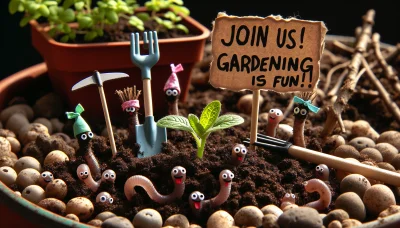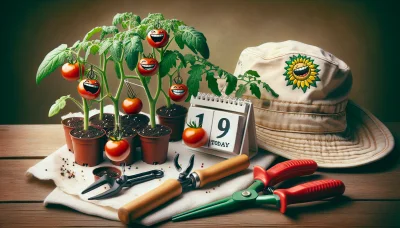Leaf Casting Guide Quiz
Test Your Knowledge
Question of
Leaf Casting Guide: A Beginner's Introduction
Leaf casting is a unique and creative gardening technique that involves creating detailed concrete replicas of leaves. This process not only allows gardeners to capture the intricate beauty of nature but also serves a practical purpose by creating decorative stepping stones, birdbaths, or garden ornaments. By using real leaves as molds, each cast becomes a one-of-a-kind piece that adds a personalized touch to garden spaces. This method is especially appealing for its simplicity and the way it enables even beginners to create stunning, natural art with minimal tools and materials.
Materials Needed for Leaf Casting
- Concrete mix
- Water
- A mixing bucket
- Gloves
- Leaves
Step-by-Step Process for Creating Leaf Castings
- Select a leaf with a prominent vein pattern for a detailed casting.
- Clean the leaf thoroughly to remove any dirt or debris.
- Prepare your work area by covering it with plastic sheeting to prevent sticking.
- Mix the casting material according to the manufacturer's instructions. Plaster or concrete is commonly used.
- Apply a release agent to the leaf to ensure the casting comes off easily once it's set. Cooking spray can work.
- Place the leaf vein-side up on the plastic sheeting.
- Gently apply the casting material over the leaf, making sure to cover all the details without making it too thick.
- Allow the casting to set as per the material's setting time. This can vary, so refer to the instructions provided.
- Once set, carefully peel the leaf away from the casting to reveal the detailed impression.
- Cure the casting by allowing it to dry completely. This can take several days, depending on the material and thickness.
Design Ideas for Leaf Castings in the Garden
Leaf castings, the art of capturing the intricate details of leaves in concrete or plaster, offer a unique way to add a touch of nature's elegance to garden designs. These detailed impressions can be used in a variety of ways to enhance the aesthetic appeal of outdoor spaces. Strategically placed along garden pathways, they can serve as stepping stones that guide visitors through the beauty of your garden. Alternatively, leaf castings can be mounted on garden walls or fences as decorative plaques, bringing an artistic element to vertical spaces. Incorporating them into water features, such as the bottom of a bird bath or as accents around a pond, adds a naturalistic touch that blends seamlessly with the outdoor environment. For a more functional application, leaf castings can be used as unique garden markers, identifying different herbs or plants with a creative flair. Regardless of how they are used, leaf castings are a beautiful way to celebrate the diversity of nature and add a personalized touch to garden landscapes.
Tips for Perfect Leaf Castings
- Choose the Right Leaves: Look for leaves that are sturdy and have well-defined veins for the best detail in your casting.
- Mix Concrete to the Correct Consistency: Your concrete should have the consistency of thick pancake batter for easy application and optimal detail capture.
- Proper Curing Times: Allow your leaf casting to cure slowly and evenly. Covering it with plastic for the first 24-48 hours can help prevent cracks during the curing process.
- Prep Your Leaves: Clean the leaves gently to remove any dirt or debris without damaging them. A soft brush can be helpful for this.
- Use a Supportive Backing: For larger leaves, a wire mesh or similar support embedded in the concrete can prevent breaking once cured.
- Seal the Finished Casting: To protect your leaf casting from the elements, apply a concrete sealer after it has fully cured.
- Experiment with Pigments: Adding pigments to your concrete mix can create stunning, colorful leaf castings.
- Practice Makes Perfect: Don’t be discouraged by initial failures. Each attempt will help you refine your technique and achieve better results.
Maintaining Your Leaf Castings
To ensure the longevity of your leaf castings, especially when displayed outdoors, proper maintenance is crucial. Begin by choosing a location that minimizes exposure to extreme weather conditions, such as direct sunlight, heavy rains, or snow. This helps in preserving the intricate details and structure of the casting. Sealing your leaf castings is also essential in protecting them from moisture and the elements. A clear, outdoor polyurethane sealant is recommended for its durability and ability to shield the castings from water and UV damage. Apply the sealant according to the manufacturer's instructions, typically requiring multiple thin coats, allowing ample drying time between applications. Regularly inspect your castings for signs of wear or damage, and reapply sealant as needed to maintain their beauty and integrity over time.












